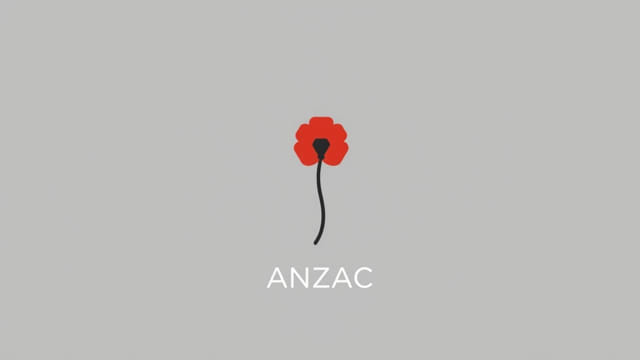The acronym ANZAC holds a special place in the history and identity of both Australia and New Zealand. It represents a legacy of bravery, sacrifice, and camaraderie that continues to be honored and remembered today. Understanding the full form of ANZAC, its historical context, and the significance behind it offers a deeper appreciation of how two nations united in times of conflict and how that unity shaped their national consciousness. The term is closely linked to World War I, particularly the Gallipoli Campaign, which remains a defining moment in the military histories of Australia and New Zealand.
What Does ANZAC Stand For?
The full form of ANZAC is theAustralian and New Zealand Army Corps. This was a combined military formation comprising soldiers from both Australia and New Zealand who fought together under a unified command during World War I. The term was first used in 1915 when the corps was formed to take part in the Gallipoli Campaign, an Allied effort to secure the Dardanelles Strait and open a sea route to Russia.
Breakdown of the Acronym
- A Australian
- N New
- Z Zealand
- A Army
- C Corps
This joint force was made up of volunteer soldiers from both nations who fought side by side, symbolizing a strong military alliance and a shared commitment to the Allied cause during the war.
Historical Background of ANZAC
At the outbreak of World War I in 1914, Australia and New Zealand were dominions of the British Empire and thus were automatically involved in the conflict. Both countries responded with enthusiasm, sending troops overseas to support Britain. The idea of forming a joint army corps was driven by the strategic needs of the Allies and the practicalities of deploying troops from geographically close but distinct nations.
Formation of the Australian and New Zealand Army Corps
The ANZAC was officially formed in Egypt in early 1915 under the command of Lieutenant General Sir William Birdwood. This joint force included several infantry divisions from both countries, along with support units. Their first major operation was the landing at Gallipoli on April 25, 1915, a campaign that has since become legendary for its hardships and valor.
The Gallipoli Campaign
- Intended to break the stalemate on the Western Front by opening a new front against the Ottoman Empire.
- The campaign was marked by difficult terrain, fierce resistance, and heavy casualties.
- Despite the ultimate failure of the campaign, ANZAC troops earned a reputation for bravery, endurance, and solidarity.
The anniversary of the landing, April 25, is commemorated annually as ANZAC Day in both Australia and New Zealand, honoring the soldiers who served and sacrificed their lives.
Significance of ANZAC Beyond Its Military Meaning
While ANZAC originally referred to a specific military corps, over time, the term has grown to represent broader values and national identity. It symbolizes qualities such as courage, mateship, resilience, and sacrifice that are deeply ingrained in Australian and New Zealand culture.
ANZAC Spirit
- The concept of the ANZAC spirit reflects the shared values and ethos of soldiers who fought together.
- It emphasizes loyalty, selflessness, and determination in the face of adversity.
- The spirit extends beyond the battlefield to influence national character and social cohesion.
Commemorations and Legacy
ANZAC Day, observed every April 25, is a national day of remembrance in Australia and New Zealand. It includes dawn services, parades, and ceremonies that pay tribute to all military personnel who served in wars, conflicts, and peacekeeping missions.
- ANZAC memorials and museums preserve the history and educate future generations.
- The term ANZAC is protected by law in both countries to respect its historical importance.
- It remains a symbol of the shared heritage and close relationship between Australia and New Zealand.
ANZAC in Modern Context
Today, the full form and meaning of ANZAC continue to resonate in both nations. It not only marks a historical military alliance but also serves as a reminder of the human cost of war and the enduring bonds forged in challenging times.
Military and Civic Influence
- ANZAC traditions influence military training, ceremonies, and values in both countries.
- The term is invoked in discussions about national identity, citizenship, and service.
- ANZAC serves as an educational foundation for teaching history, patriotism, and remembrance.
Global Recognition
Although ANZAC is a term deeply rooted in Australia and New Zealand, it has gained international recognition through shared commemorations and historical scholarship. The Gallipoli Campaign, in particular, is studied worldwide as a poignant example of courage and tragedy during World War I.
The full form of ANZAC Australian and New Zealand Army Corps reflects a significant military alliance that shaped the course of World War I and the identities of both Australia and New Zealand. Originating as a joint military formation, ANZAC has come to symbolize the courage, sacrifice, and enduring friendship between two nations. Its legacy is preserved through annual commemorations, cultural narratives, and the collective memory of generations who honor the bravery of those who served. Understanding the full form of ANZAC and its historical and cultural significance enriches our appreciation of this iconic symbol of national pride and shared history.
“`
